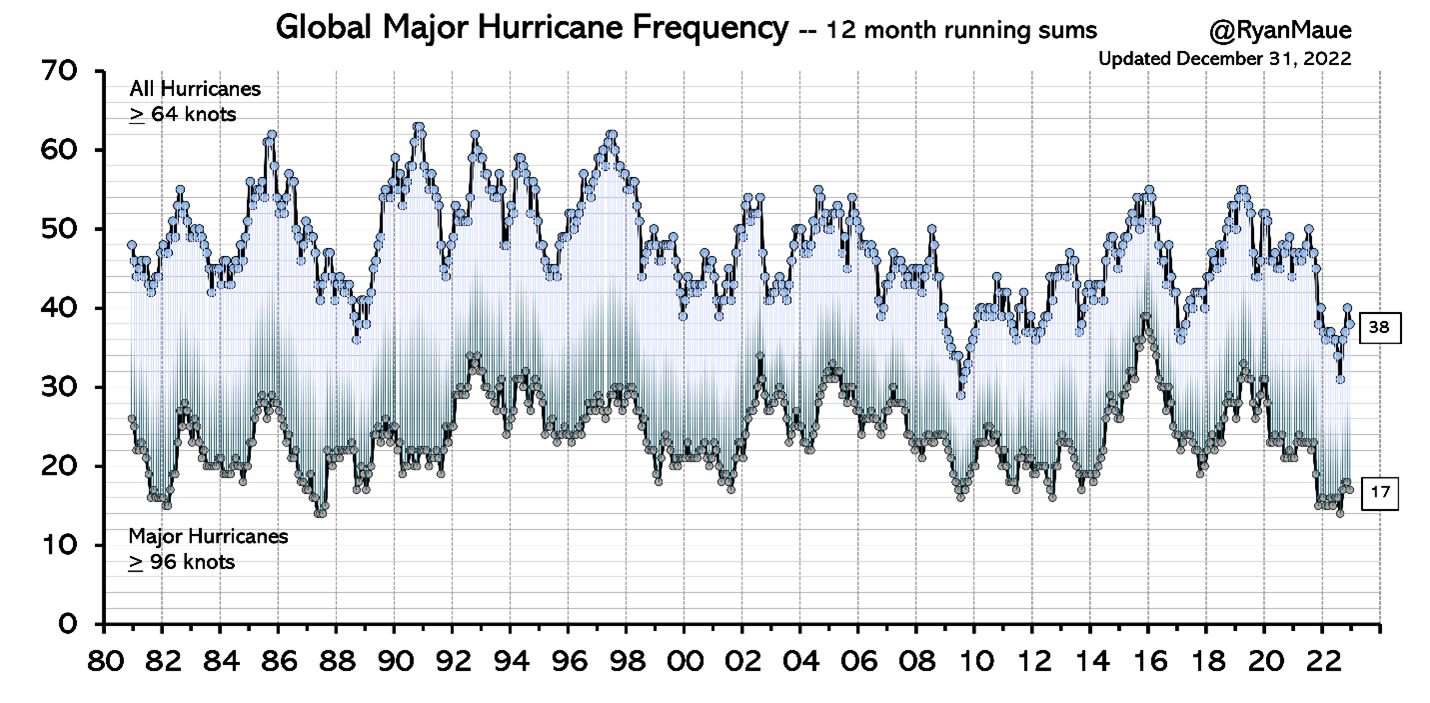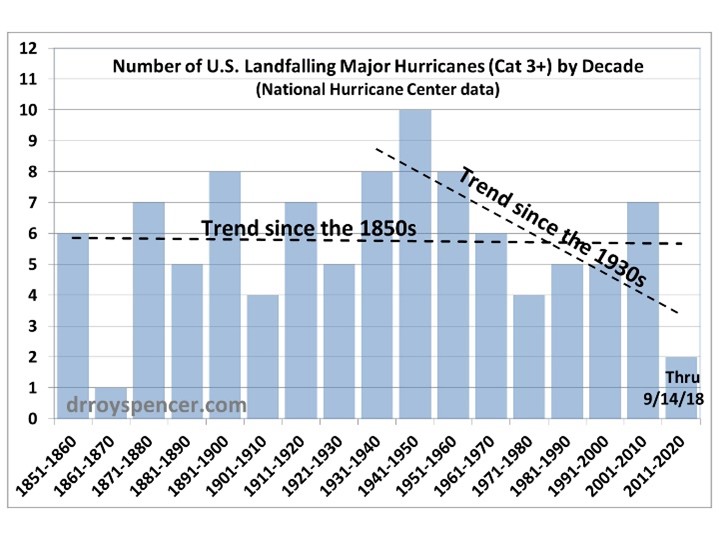There were one quarter the number of human beings on the planet in 1930, but there were 28 times more deaths caused by climate and natural disasters than today. This was because the weather then was more extreme than now and we lacked the early warnings we get today when extreme weather is approaching.
Former Ottawa Mayor Jim Watson's comments about Ottawa tornadoes being the result of climate change is also unjustified. The actual causes of the September 2018 Ottawa/Gatineau tornadoes were natural. As unseasonably cold and dry air from western Canada advanced toward the warm and moist air over southern Ontario, it produced a major thunderstorm with a funnel cloud. This then produced the two severe Ottawa tornadoes. Without that trigger of western cold air, there would not have been a severe thunderstorm and tornadoes in the Ottawa region.
In "Politicians were wrong to blame the tornadoes on climate change," (Sun chain of newspapers across Canada, October 1, 2018), Dr. Khandekar and I explained:
Advertisement
The July 31, 1987 Edmonton tornado had wind speeds up to 417 km/h (Ottawa's tornadoes peaked at 265 km/h) and destroyed over 300 homes and killed 27 people. Only the Regina tornado of June 30, 1912 was deadlier, killing 28 people. Other severe Canadian tornadoes include the 1946 tornado hit on the Detroit River (17 fatalities), the July 14, 2000 Pine Lake tornado (12 fatalities and at least 140 injured), and the June 22, 2007 Elie, Manitoba tornado that had wind speeds of between 420 to 510 km/h.
And, generally speaking, the same is happening in the United States. As can be seen in the following graph, almost all tornado activity is either at or below the average. Moreover, there is no correlation between tornado activity and either emissions or "average global temperature"'

Historical data show that weather has usually been more extreme during colder periods. This was especially the case during the centuries-long Little Ice Age. For example, Chinese researchers found that "typhoon frequency seemed to have increased at least regionally during the coldest phases of the Little Ice Age." And during the most recent extended period when Earth's climate was generally cooling (1945 – 1977), we saw twelve tropical cyclones in the north Atlantic reach hurricane intensity in 1969, far above normal. A year later a tropical cyclone in the Bay of Bengal killed about 250,000 people, the greatest number ever in a single weather-related disaster.
Global warming apparently reduces tropical cyclone activity over all time frames. Perhaps this is why we have seen a slight reduction in the frequency of all hurricanes in the past four decades (see graph below. Other tropical cyclone metrics may be seen here).

Advertisement
In his presentation at the 14th International Conference on Climate Change in Las Vegas on Oct. 17, 2021, atmospheric scientist Dr Neil L Frank, former Director of the National Hurricane Center and chairman for the World Meteorological Organization's Hurricane Committee for North and Central America, showed the graph below and said: "There has been a decrease in hurricane activity in the Atlantic, certainly a major decrease from the 40s and the 50s."

For more on this topic, see "U.S. Landfalling Hurricanes Trend Down in 2020 – Despite Claims of 'Record-Breaking' Season," by meteorologist Anthony Watts (January 5, 2021).
Discuss in our Forums
See what other readers are saying about this article!
Click here to read & post comments.
11 posts so far.